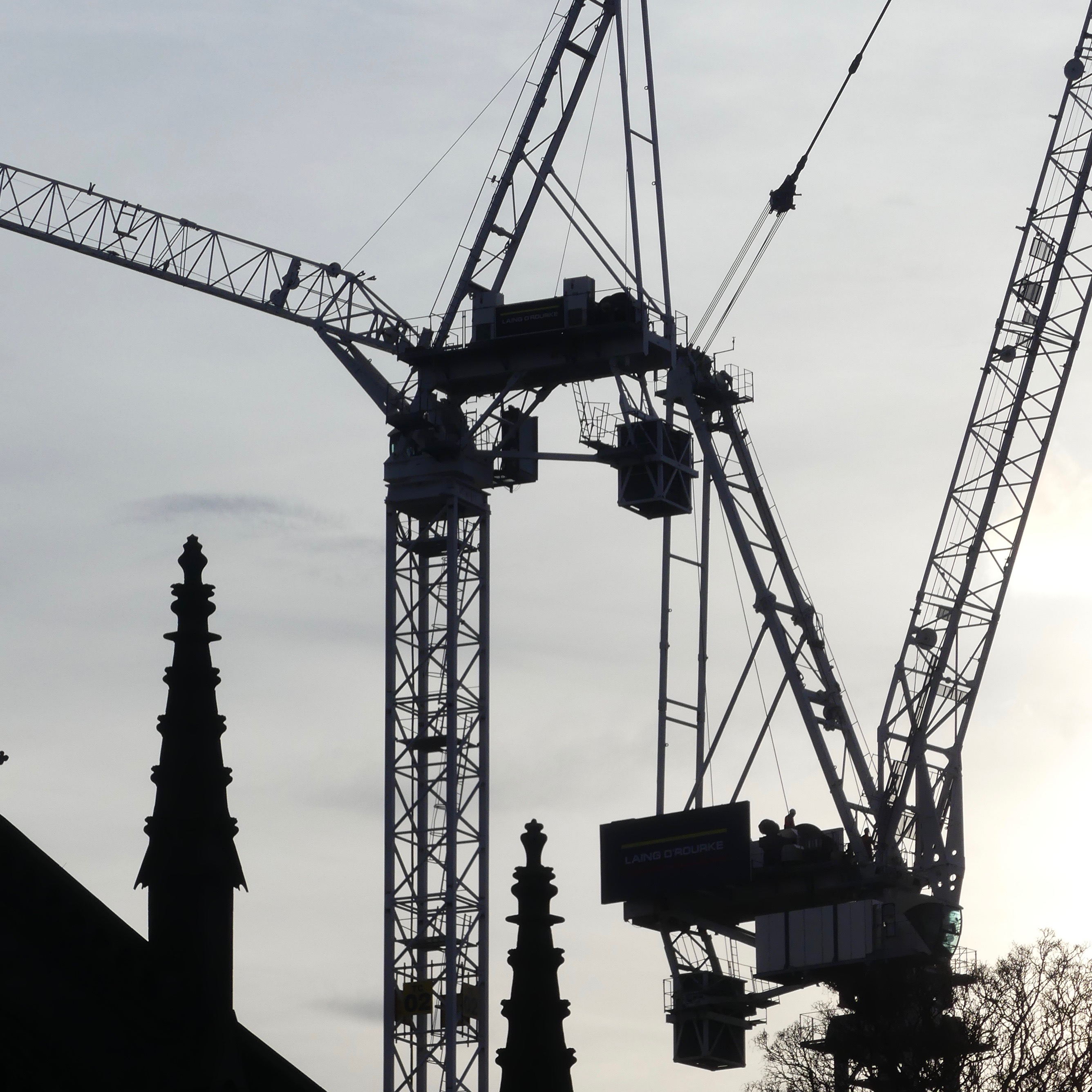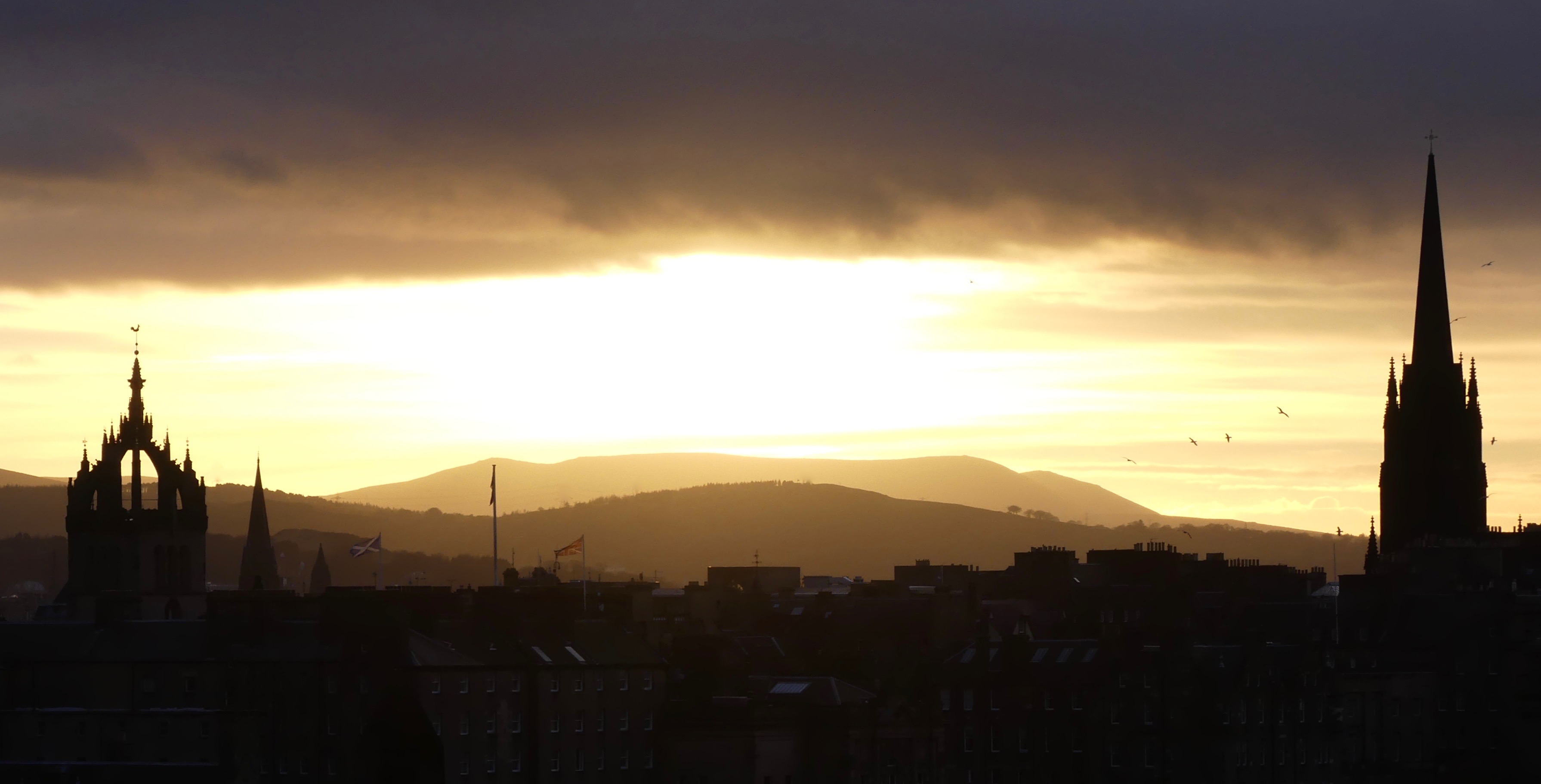
Professor James Garden, Edinburgh World Heritage's new chair, marked the organisation’s 20th anniversary with a speech at the French Institute on George IV Bridge last night.
He outlined a vision for the city, the scale and challenge of a programme to preserve and celebrate it, and made trenchant observations about current development in the Waverley Valley.
While conceding that temporary interventions had a role to play in Edinburgh’s green spaces, he was unambiguous in asserting that ‘this year’s Christmas Market clearly goes too far.’
Suggesting that the event was not authentically Scottish, beautifully designed, of high quality, or a genuine pleasure, he called for any future intervention here to be more sensitive to the exceptional environment. Other potential venues should also be explored.

On tourism, Garden welcomed the City Council’s helpful policy paper, and a new draft tourism strategy which places greater emphasis on quality of life in the city, not least for residents (see Issue 291, p.2).
Also welcome were proposals to: (a) tie in the tourism sector to development and delivery of the Edinburgh World Heritage Site management plan; (b) ring-fence some revenue from any future Tourist Tax for conservation of the historic environment.
He concluded his thoughts on tourism with a call for effective regulation of AirBnBs. The Council’s tourism strategy ‘needs teeth or it will be useless’.
Looking to the future, Garden was broadly optimistic. Acknowledging much new development was bland and lacked character, he pointed to the area behind Jury’s Inn where developers had instead listened to EWH and improved their plans.
He expected new development in Edinburgh to improve over the next ten years, and hoped the Scottish Government would reject proposals to turn the old Royal High School into a hotel.

Speech in full
Good evening ladies and gentlemen, and welcome to this special Edinburgh World Heritage celebration – marking our 20th anniversary as a charity, as well as the start of our 1,500th project in the city, the conservation of the Canongate Housing Development in the Old Town.
My name is Professor James Garden, and I have the honour of being the newly appointed Chair of this illustrious charity.
I first came to live in Edinburgh in 1791 – sorry, 1971 – as a young medical student, and had the privilege to have the Lawnmarket (the Edward Salvesen Hall) as my home for my first three years before moving to spacious student digs in the New Town in Scotland Street. This was my first exposure to the city’s history and heritage, and the potent impressions and memories of those happy days in the city still live with me.
I thought this would be a good moment to reflect on what we, as a charity, believe in. I’m delighted that some of you attended our recent fundraising dinner at the Playfair Library, the theme of which was ‘Built to Last’ – which I think is a very apt expression of our philosophy, and how we go about the conservation of our city. Edinburgh is a long-term project. I’ll just remind you, in case it’s not in your diaries, that in 2024 we will celebrate the 900th anniversary of the establishment of the Royal Burgh of Edinburgh by David I.
Though few buildings remain from this period, the structure and beauty of the Old Town bear witness to the long-term thinking of the city’s first burghers. Fast-forward to 1621, and the Town Council published an ordinance requiring the building of tenements in stone, in preference to the timber-framed constructions that tended to fall prey to fire, and marauding English armies. This long-term, visionary thinking helped usher in a golden age of tenement building, including lofty Milne’s Court (1690), and James Court (1723) where David Hume and James Boswell lived.
The planning for the New Town began during the reign of James VII, and of course started in earnest in 1752 with the publication of Elliot’s specific proposals. Work began in 1767. These were long-term projects, which took time to plan, and time to complete.
The modern phase of the conservation of the city began in earnest 49 years ago, and continues to this day. Contrast this with buildings such as the former RBS offices in Dundas street, a poorly designed structure, put up in haste, inflexible, unloved, unsellable, and now due for demolition. An aesthetic and environmental disaster. I do recognise that the city has faced challenges in recent years – and is now thankfully emerging from this period of uncertainty. But we do need to rediscover our traditional passion for planning well ahead, investing for the long-term, sustainably re-using and mending, and properly maintaining our incredible built environment.
Our other core belief is in connecting people to their heritage. Our simple belief is that if people from whatever background, or age, or social demographic, feel a genuine connection and love for Edinburgh, its heritage and history, then the conservation of the city will be guaranteed. Our growing membership is one example of this, and the sense of connection people feel for the city’s heritage.
Our work at the Tron is another example. Since we opened in June 2018 over 600,000 people from all over the world, including 150,00 locals, have visited our exhibition, which celebrates the Old and New Towns of Edinburgh, as well as Scotland’s other World Heritage Sites. And I’m pleased to announce that the Board of Edinburgh World Heritage agreed last week to make a long-term commitment to the building, which will hopefully result in its complete conservation and refurbishment over the next few years (assuming we are supported by our dear landlord, the City of Edinburgh Council).
Our vision is to create a space where World Heritage can be celebrated, and where people can get involved in tackling some of the issues we face.
The condition of the World Heritage site
Our site contains over 4,500 individual buildings, of which 75% are listed for their special architectural or historic interest. Our surveys of the site over the years suggest that 25–40% of these buildings require some form of intervention and repair due to lack of regular maintenance, climate change or simple neglect. As newly appointed Chair, this is now what keeps me awake at night, much to my wife’s annoyance.
However, we are delighted to announce a new collaboration with the University of Edinburgh and the Data Driven Innovation team which will propose a way to survey the site using a range of new technologies such as AI and Deep Learning. Think of a super-charged version of Google Street View which identifies issues before they become serious. This will not replace traditional building surveys, but should certainly enhance them, and help us conserve the city.
Public Realm and the Waverley Valley
Another area I feel duty-bound to comment on is the use of our great public spaces: our parks and gardens, which are, as I’m sure you know, a key reason for our UNESCO inscription.
Some places hold a very special place in our nation’s affections, and none more so than Princes St Gardens and the Waverley Valley – what Scott called the ‘great arena’ between the Old and New Towns. This is an environment which allows us to appreciate the contrast between Edinburgh’s two great urban forms, as well as providing a haven of peace and green tranquillity through the year (though of course not at the moment).
We don’t doubt that temporary interventions in our public spaces can play an important role in bringing many thousands of people into the city to enjoy what Edinburgh has to offer, but this year’s Christmas Market clearly goes too far.
Would I sound very old fashioned and out-of-touch if I said that what’s happening is just not very Edinburgh – in the sense of paying respect to values such as being authentically Scottish, being beautifully designed, of high-quality and being a genuine pleasure? So, for the future, we do continue to call for any intervention in Princes Street Gardens to be more sensitive to the exceptional environment, and to explore other venues for these activities.
New tourism strategy
The past year has also seen extensive discussion on the role of tourism in Edinburgh.
In May, the City Council published a helpful policy paper, which highlighted that the quality of life for residents and the attractiveness of Edinburgh as a destination are inextricably linked, and that the one cannot suffer at the expense of the other. It went on to characterise the tourism industry as one of low pay, low skills, and insecure working conditions.
Now, we have a new draft tourism strategy for the city focused on managing growth responsibly versus simply driving growth. It states that ‘the principal beneficiaries of this strategy should be Edinburgh’s people. Tourism should directly contribute to the quality of life in the city, with the city’s residents enjoying the benefits that a well-managed, responsible and thriving tourism sector generates’.
World Heritage is very prominent, too, and the strategy explicitly states that ‘the tourism sector should take a more active role in the development and delivery of the UNESCO World Heritage Site Management Plan’. All this is very encouraging, and I’d like to thank the Edinburgh World Heritage team for the work they’ve done behind the scenes to help secure this change of direction.
Once the strategy is finalised in the New Year, we will need to turn fine words into action, with Edinburgh Council and industry partners, especially in areas such as ring-fencing some revenue from the Tourist Tax to help conserve the historic environment, and introducing a robust regulatory regime for Airbnbs, of which there are now over 12,000 in the city. Don’t get me on to Airbnbs.
In short, the strategy needs teeth or it will be useless.
Contribution of new development
Finally, I’d offer some thoughts on the contribution of new development to the city over the past 10 years. When we ask the people of Edinburgh for their opinion on this matter, I’m sure you’ll have a good idea about what they say – let’s just say it’s a mixed report card.
However, the city is seeing unprecedented levels of investment, from New Waverley, to the St James Centre, and Kings Stable’s Road. This subject generally arouses very strong feelings, due to the heady mix of politics, planning and capital finance involved in making these things happen. While much of this building could be criticised for its blandness and lack of character, some developers are listening to us, and adapting their plans to better reflect the city’s weft and weave. The development of the area behind Jury’s Inn is one example where plans have been adapted to reflect the structure and scale of the Old Town.
We expect that the next 10 years will be a better one for new development, starting, we hope with the Scottish Government rejecting the appeal against the decision of the city to reject the hotel development at the Old Royal High School.
So, in closing, I’d like to thank you all for your invaluable support – moral, and financial. If you are not already actively supporting us, you can become a member tonight, or buy membership as a gift for a loved one. Please also buy a raffle ticket – we will be announcing the winners shortly. May I wish you all a very merry Christmas and a happy and fulfilling New Year!